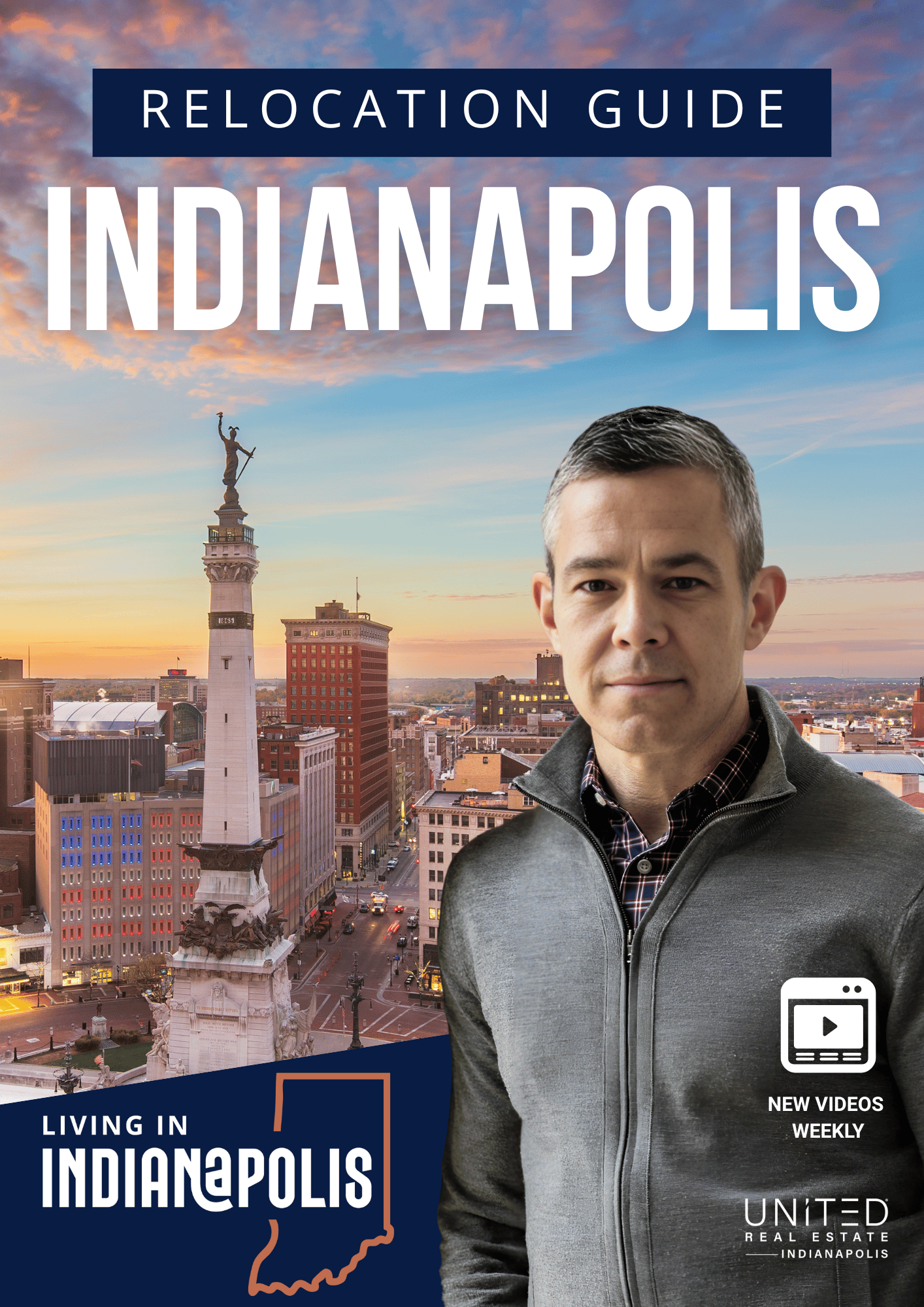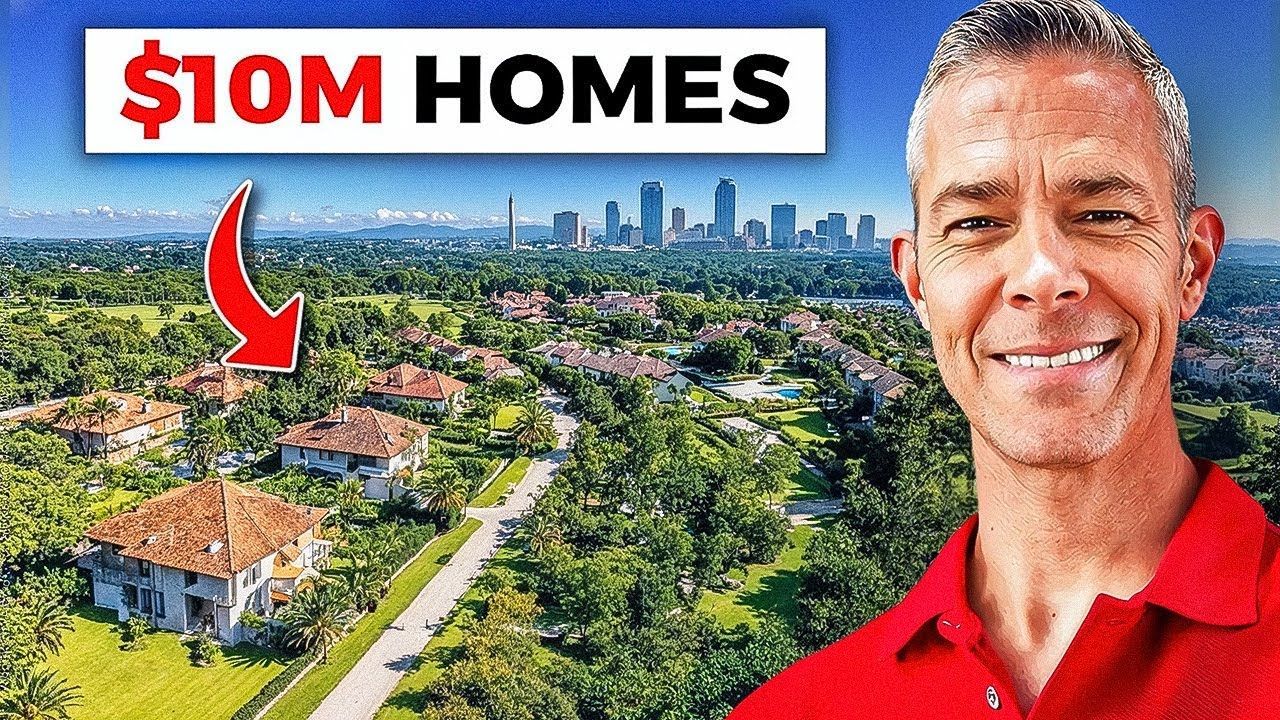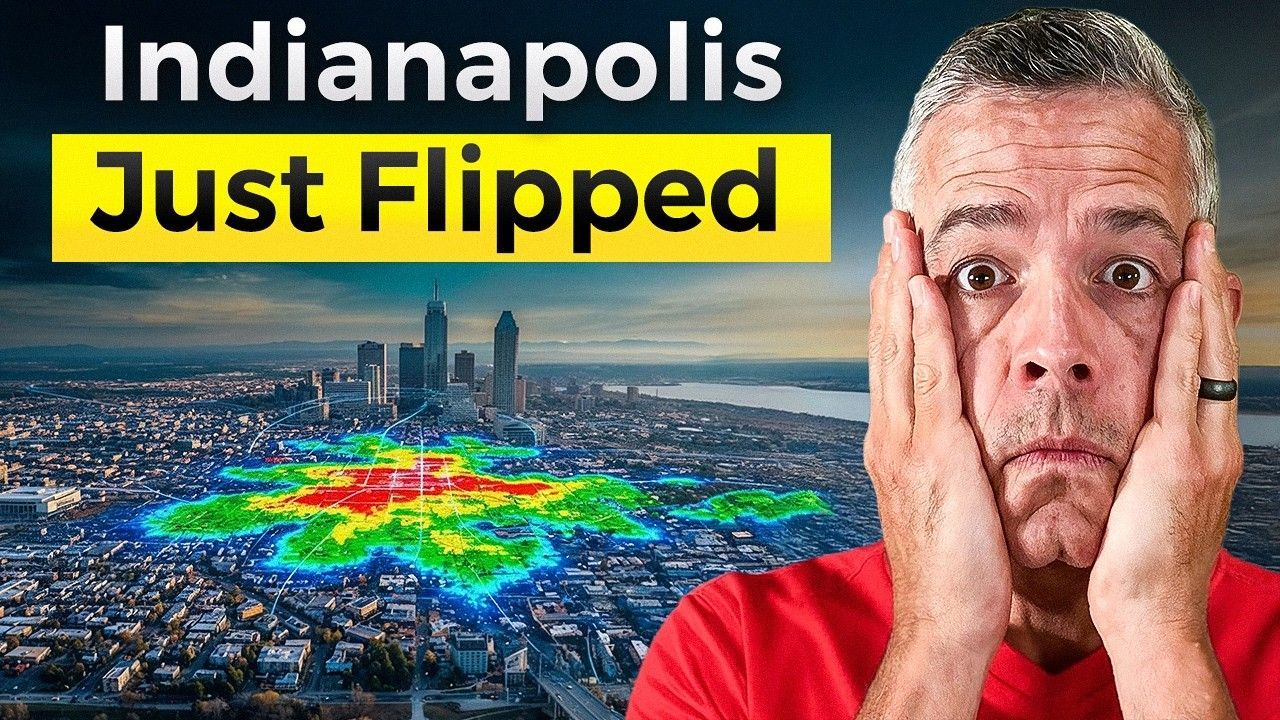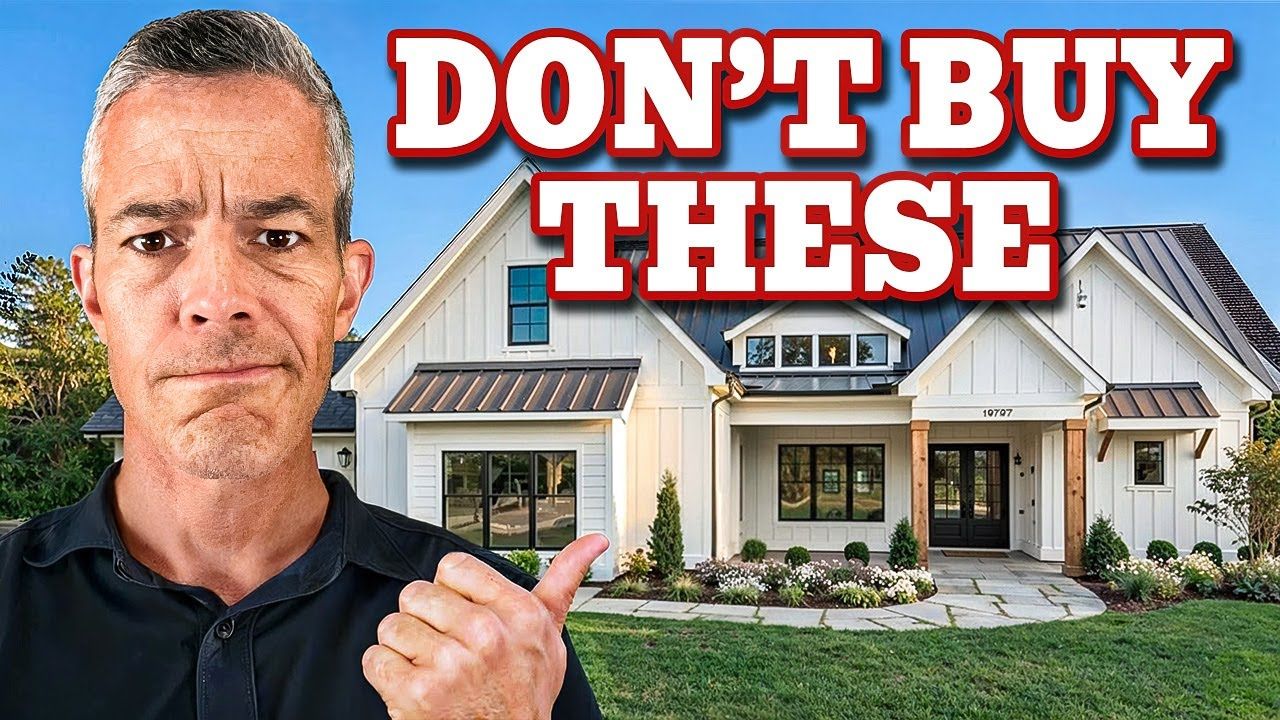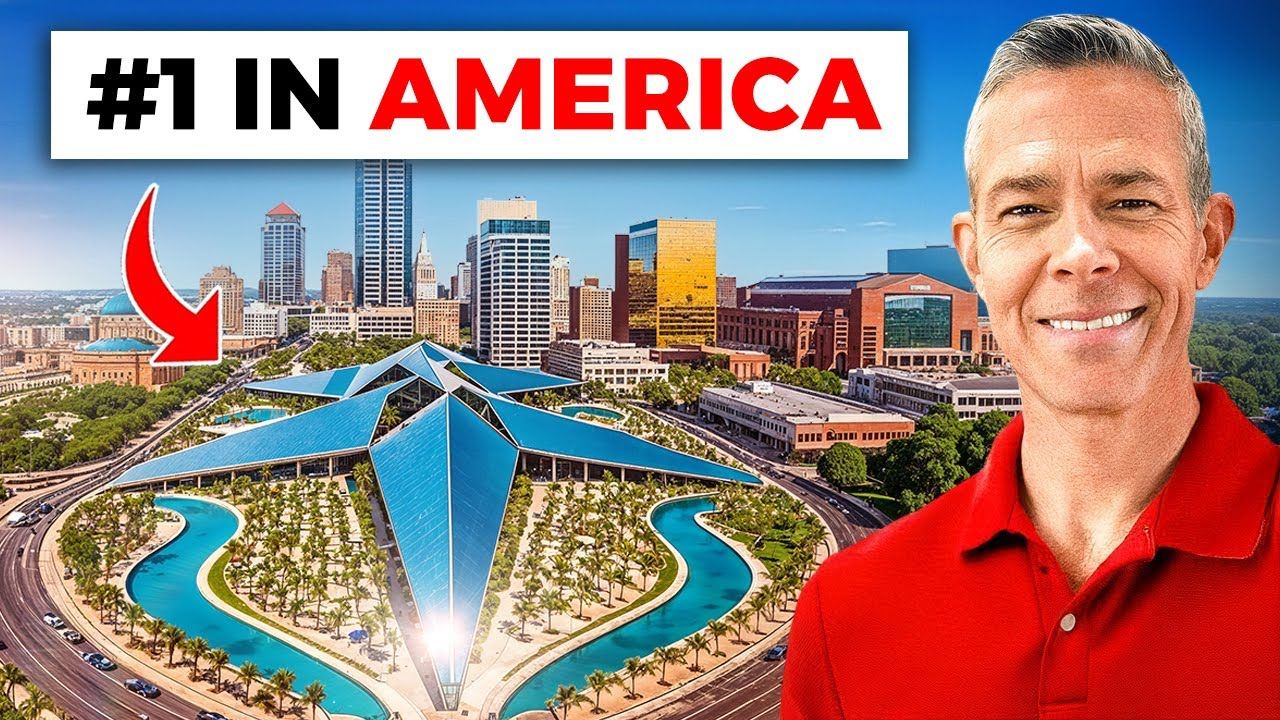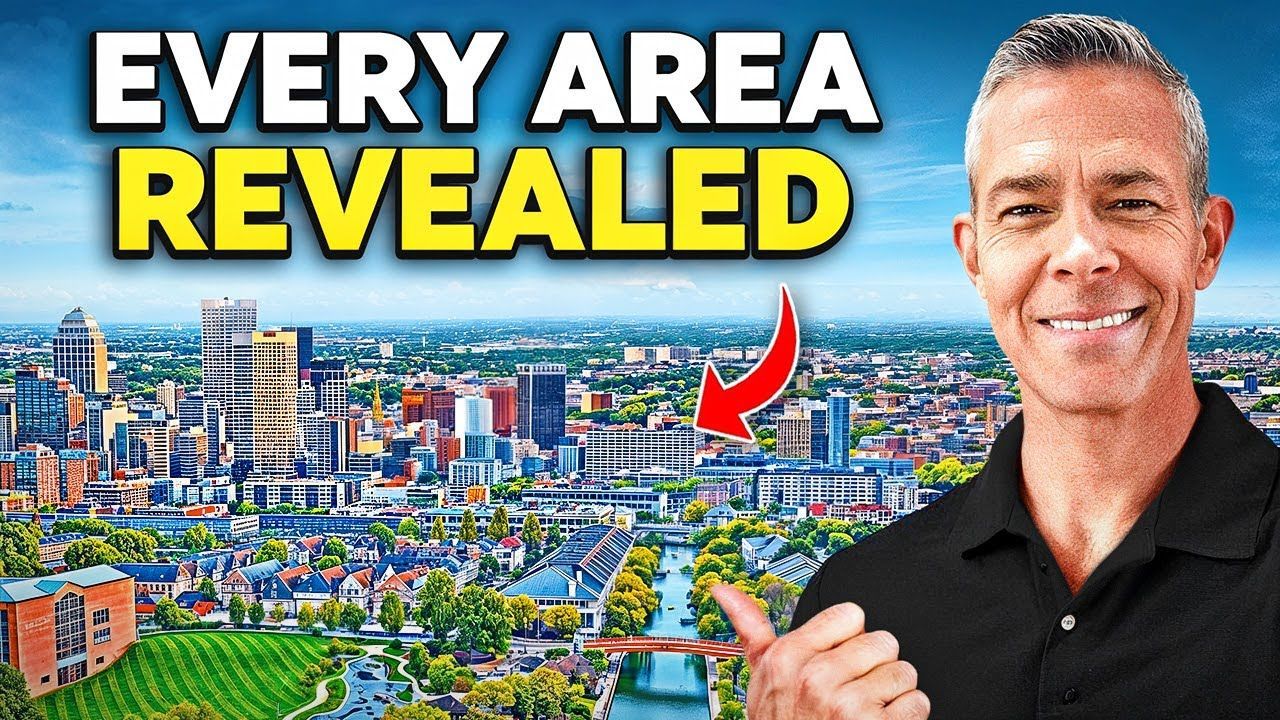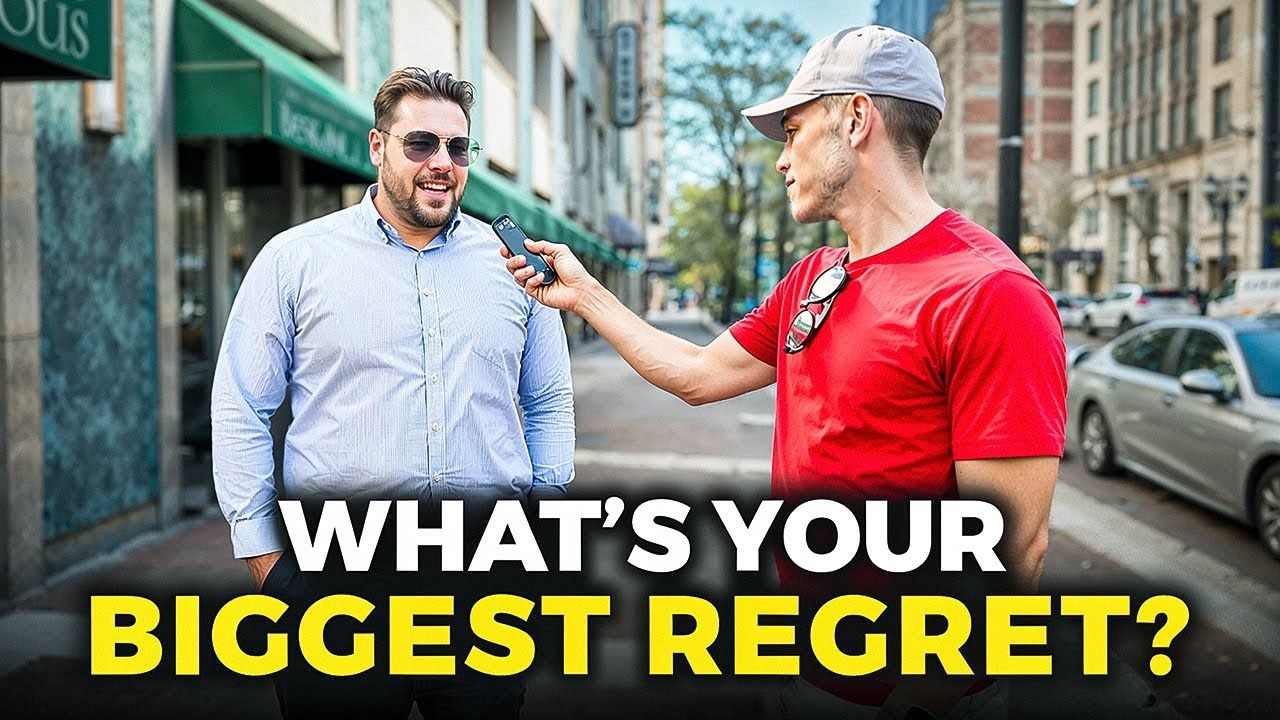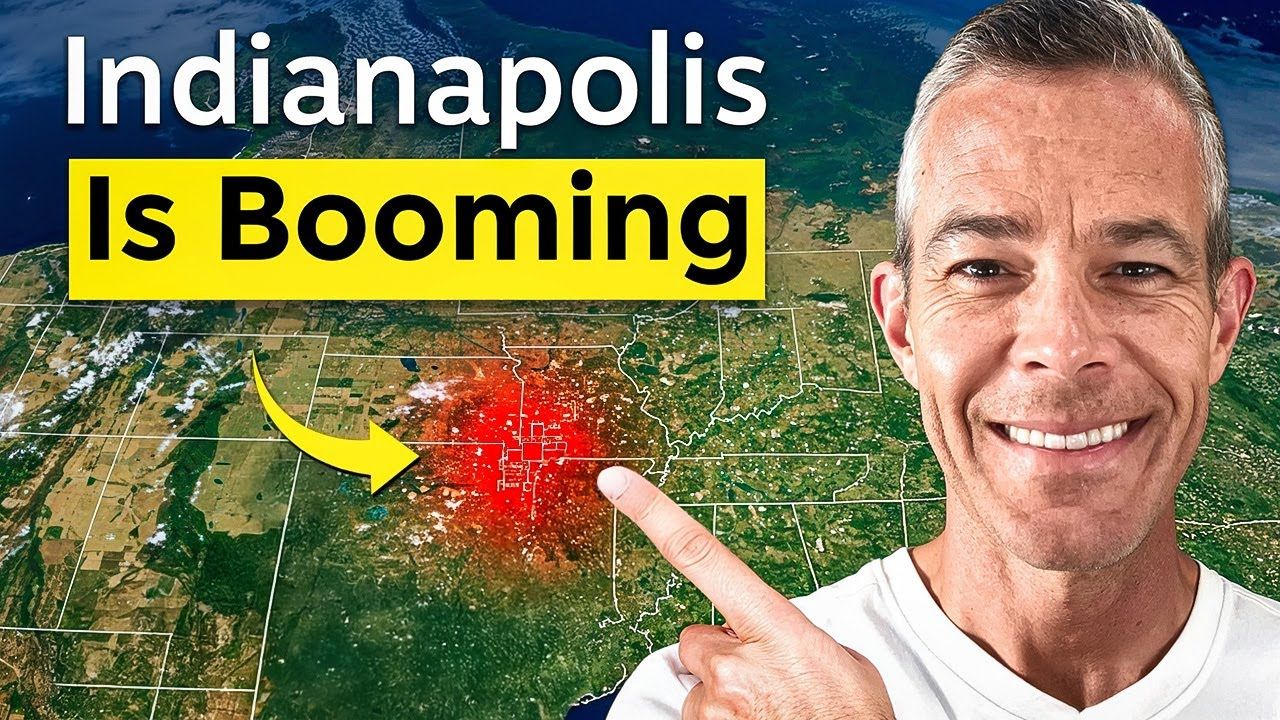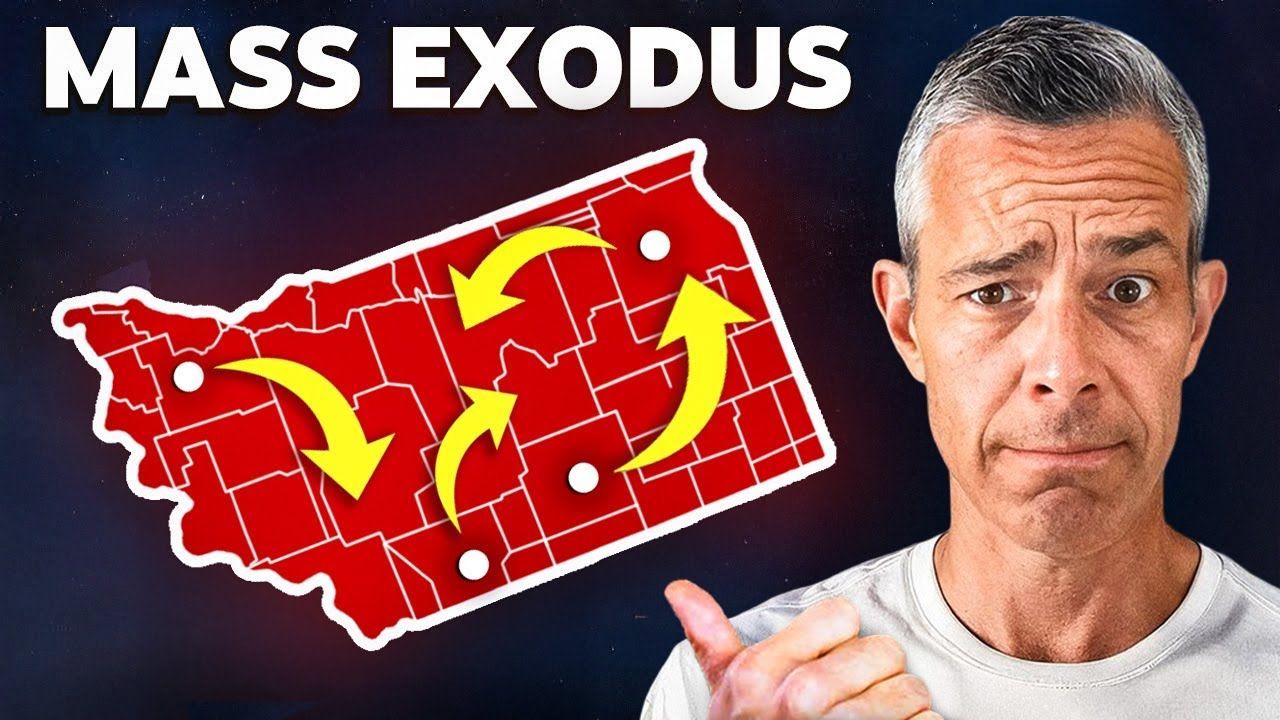Why Is Everyone Leaving Indianapolis: What Buyers and Sellers Need to Know
I'm Jason Compton with Living In Indianapolis, and I want to answer a question I see everywhere online: why people are leaving Indianapolis—and more importantly, what that trend means if you're planning to buy or sell between late 2025 and 2026. In this article I’ll walk through the five real reasons people are leaving Indianapolis, how those reasons are reshaping the metro real estate market, and practical, tactical guidance for buyers and sellers who want to win in this environment.
If you’ve been scrolling Reddit, social media, or deep into neighborhood Facebook groups, you’ll see lots of noise about why people are leaving Indianapolis. I'm going to cut through the noise: list the real drivers, show how the market is reacting, and give clear, actionable advice whether you're buying, selling, or just thinking about moving.
Table of Contents
- Why Is Everyone Leaving Indianapolis: What Buyers and Sellers Need to Know
- Reason #1 — Property Taxes (and How They Push People Out)
- Reason #2 — Infrastructure Struggles Inside the City
- Reason #3 — Affordability is Changing
- Reason #4 — Crime and the Perception of Safety
- Reason #5 — Remote Work and Changing Priorities
- What Buyers Need to Know for the Rest of 2025 Into 2026
- What Sellers Need to Know for the Rest of 2025 Into 2026
- Practical Checklist: Buyers and Sellers
- How Micro-markets Are Reshaping Where People Move
- Real Examples From Relocation Clients
- FAQs About Why is Everyone Leaving Indianapolis
- Final Thoughts — What I Recommend if You’re on the Fence
- Closing — Where This Trend Goes Next
Why Is Everyone Leaving Indianapolis: What Buyers and Sellers Need to Know
Before we jump into the five reasons people are leaving Indianapolis, a short roadmap: I’ll explain each reason, pair each with real-world market consequences, and then cover what buyers need to watch for and what sellers should prioritize. This isn’t clickbait—these are patterns we've seen from relocation clients, local buyers, and sellers across the metro.
VIEW HOMES FOR SALE IN INDIANAPOLIS
Reason #1 — Property Taxes (and how they push people out)
One of the most common explanations for why people are leaving Indianapolis is property taxes. Historically, Indiana and the greater Midwest have been attractive because taxes were comparatively low. But once people live here and start comparing counties and towns, the nuance shows up.
Here are two concrete examples we discuss with clients all the time:
- Marion County (Indianapolis): median home value ~ $249,000, median annual property tax roughly $2,350.
- Hancock County (towns like New Palestine, Greenfield, Fortville): median home value ~ $349,000, median annual property tax just over $2,000.
At first glance it seems backwards: a higher-priced home but lower tax dollars annually. What that means in practice is that some people can move just a short drive out of Indianapolis to surrounding counties and get more house for roughly the same tax bill. That small difference—often a few hundred dollars a year—can feel big when it buys you extra square footage, a larger yard, or newer construction.

When folks ask me why people are leaving Indianapolis, property taxes almost always come up. The math matters: effective property tax rates vary by county, township, assessed value, and exemptions. For many buyers the homestead exemption is the game-changer—more on that later—but the perception and reality of tax differences are pushing moves to outer suburbs and neighboring counties.
Reason #2 — Infrastructure struggles inside the city
Growth has been fast in Indianapolis over the last couple of decades, but infrastructure hasn't leveled up everywhere. Construction seems perpetual in certain corridors, particularly parts of the south side and northeast side. Road quality varies block to block, and public transit options are limited compared to bigger metro areas.
For many residents, constant construction and inconsistent roads lower quality of life. If you’ve already expected modest traffic, chronic construction can feel like more than the city’s fair share. Meanwhile, some suburbs—Westfield and Carmel are the two examples I mention frequently—have invested heavily in infrastructure and are perceived as newer, cleaner, and easier for daily living.
When people wonder why people are leaving Indianapolis, infrastructure is one important reason: the desire for newer streets, better traffic flow, and municipal services that feel ahead of growth rather than playing catch-up.
Reason #3 — Affordability is changing
Affordability in the Indianapolis region has shifted. Since 2020, home prices across the metro jumped around 35%. That’s a lot in five years. Indianapolis remains relatively affordable compared to coastal metros and high-growth southern cities, but “affordable” isn’t what it used to be.
For buyers who expected $500,000 or $600,000 to go a long way, the reality can be a surprise. Those budgets don’t buy the same depth of options in every neighborhood. As a result, people are moving to places where their dollar stretches farther: fast-growing suburbs and smaller towns like Whitestown (which grew from under 500 people to over 13,000 in 20 years), Geist-area suburbs, and pockets in Hancock and Johnson counties.

So when you ask why people are leaving Indianapolis, affordability and the desire to get more home for the same money is a key driver. Buyers are chasing space, newer builds, and communities that still feel like they’re on the ground floor of growth.
Reason #4 — Crime and the perception of safety
Crime and the perception of crime is a major topic in discussions about why people are leaving Indianapolis. There are neighborhoods that are statistically safe and neighborhoods that have real safety problems. Yet negative stories spread fast on social media and in neighborhood groups. Perception matters almost as much as actual statistics.
Many people prioritize areas where both the data and the community sentiment align toward safety. Suburban towns around Indianapolis often score very well on safety metrics and, crucially, feel safer to many homebuyers. That comfort is a huge part of the decision to move out of the city.
Reason #5 — Remote work and changing priorities
Since 2020 remote work has changed where people choose to live. Some people moved to Indianapolis because they could work remotely and wanted a lower cost of living or a different pace of life. Conversely, others moved out of Indianapolis because they can now work from anywhere and want to be closer to family or to different regions with better schools, more space, or other amenities.
Remote work has loosened ties between job location and residence. That flexibility plays into why people are leaving Indianapolis—some stay, some go, and the churn is higher because people are no longer glued to office locations.

What buyers need to know for the rest of 2025 into 2026
So you've read the reasons why people are leaving Indianapolis—what does that mean if you're buying between now and 2026? Here’s what we’re seeing and what I recommend:
1) Pricing has stabilized but hasn't plunged
Over the past six to twelve months pricing has been sticky and is now leveling off. If you were waiting for prices to drop back to 2020 levels—don’t expect a major correction in the near term. Instead, prices are stagnating, which changes the negotiating dynamic.
2) There’s negotiation room—use it
About 40% of listings across large swaths of the metro saw a price reduction in the prior 60 days. A price reduction isn't always a full market crash; it’s often a sign a seller started too high and is re-pricing to meet actual demand. That creates opportunities for buyers who are prepared and who have a clear local strategy.
3) Neighborhoods and micro-markets matter
Indianapolis is a 2.1 million-person metro with dozens of micro-markets. Neighborhoods like Meridian-Kessler, Broad Ripple, and Carmel still move fast. Other pockets like Fountain Square or certain parts of Zionsville can be slower or have lower inventory. You need hyper-local advice. One rule doesn't apply to all neighborhoods.
4) Property-tax surprises are real—plan for reassessment
Two tax points you must understand:
- Homestead exemption: If you're living in the home as your primary residence and qualify, a homestead exemption drops your tax burden significantly—bringing effective rates down to around 1% of assessed value in many cases. If you do not qualify, your taxes can be roughly double (close to 2%) depending on the county and township.
- Reassessment after purchase: If you buy a home that hasn't been reassessed in years, expect the assessed value to go up when the county re-evaluates. Higher assessed value equals higher taxes.
Buyers should run the numbers and forecast what taxes will look like post-reassessment. Make sure the property fits not only your monthly mortgage payment but also your expected future tax bill.
What sellers need to know for the rest of 2025 into 2026
Thinking of selling? Buyers haven't disappeared, but the dynamic is different than 2020–2022. Here’s how to get top dollar.
1) Price and presentation are everything
Because buyers are more cautious and research-heavy, you can’t rely on market momentum alone. Overpricing will cost you time and money. Remember: roughly 40% of listings recently had price reductions. A well-priced, well-presented home will attract more buyers and generate stronger offers.
2) Make small upgrades that validate price
Small, strategic updates—fresh paint, modern light fixtures, clean landscaping, decluttering—can make a real difference. If your home is not turnkey, it will be harder to get top dollar. Buyers are picturing themselves moving in immediately; anything that disrupts that picture reduces their willingness to pay a premium.
3) Timing matters—coordinate selling and buying
Listings are staying on the market a bit longer. If you plan to sell and then buy, sequencing becomes critical. Poor timing can put you in a stressful spot: rushed decisions, contingency juggling, or carrying two mortgages. Work with an agent who models multiple timing scenarios so you can minimize financial risk.
4) Marketing makes the difference
Today’s marketing toolkit matters. I recommend the following: professional photos, a video tour, drone photography and video, targeted social media ads, and long-form YouTube content if the home and neighborhood warrant it. Highlight the small details that buyers don’t see in a static photo—storage, utility upgrades, nearby amenities, and subtle features that make a house feel like a home.
Practical checklist: Buyers and sellers
- Buyers: Get pre-approved, research homestead exemptions for your target county, anticipate reassessment, and build negotiation room into your offer strategy.
- Sellers: Price competitively, invest in high-ROI staging and small updates, hire strong marketing, and plan sale/buy timing carefully.
- Both: Use a local agent who knows the hyper-local micro-markets—two nearby neighborhoods can have very different speeds and pricing.
How micro-markets are reshaping where people move
Indianapolis is not one market—it’s dozens. Places like Westfield and Carmel have seen explosive growth because they combine strong infrastructure investment with modern planning. Whitestown and other smaller towns grew rapidly because they offered new housing stock at scale. That micro-market fragmentation explains a lot about why people are leaving Indianapolis city limits while still staying in the metro.
When buyers ask why people are leaving Indianapolis, the answer is often twofold: they want the benefits of the metro (jobs, culture, healthcare) without some city drawbacks (infrastructure gaps, perceived safety issues, or rising central-city costs). That’s driving suburban growth and the continued strength of specific micro-markets.
Real examples from relocation clients
In conversations with relocation clients, we hear recurring themes: “We could get more house in Hancock County for similar taxes.” “We wanted newer schools and a quieter street.” “We work remotely and wanted a yard.” Those anecdotes match the data we’re seeing: people are optimizing for value, safety, and lifestyle—and that’s why people are leaving Indianapolis in certain patterns.
FAQs About Why is Everyone Leaving Indianapolis
Are people actually leaving Indianapolis in large numbers?
There is movement out of certain parts of the city, but it's not a mass exodus. The metro overall still grows; people are relocating within the metro or to nearby cities. When people ask why people are leaving Indianapolis, they often refer to neighborhood-level shifts rather than wholesale abandonment.
Will home prices crash in Indianapolis?
A major crash is unlikely in the near term. Prices rose sharply between 2020 and 2023 and have mostly stalled or flattened since. Expect stability or modest movement rather than steep declines. That said, individual submarkets may see price corrections if sellers misprice homes.
How do homestead exemptions work?
If a home is your primary residence, the homestead exemption reduces the taxable assessed value for most homeowners. In many Indiana counties this results in an effective rate closer to 1% of assessed value. If you own another primary property elsewhere, you can typically only claim one homestead exemption at a time, so plan carefully.
Should I wait to buy until more people stop leaving?
“Waiting” is risky because affordability and inventory are local. If your target neighborhood is cooling and inventory is strong, you may find negotiating leverage now. If the neighborhood you want is still hot, waiting could cost you. The best approach is to consult a local expert who can model outcomes in your exact micro-market.
How can sellers make their home stand out?
Presentation and marketing. Professional photos, video tours, drone shots if applicable, and highlighting hard-to-market advantages (finished basements, utility upgrades, storage) make a measurable difference. Small, smart upgrades and excellent staging help buyers envision living there immediately—valuable in a market where buyers are more selective.
Final thoughts — What I recommend if you’re on the fence
If you’re trying to decide whether to move, buy, or sell, use the “three-question test” I use with every client:
- What do you gain by moving (space, taxes, schools, safety)?
- What are the real costs (higher mortgage, possible tax reassessment, commute changes)?
- Can you time the move and design a marketing or buying strategy to reduce financial risk?
Answering those honestly will help determine whether to act now or wait. And if you do act, lean on a local agent who knows the hyper-local markets—because why people are leaving Indianapolis looks different zip code to zip code.
If you want a strategy session tailored to your specific situation—whether buying, selling, or relocating—reach out. I work with relocation clients and locals every day, and I love helping people navigate this complex, nuanced market.
Closing — Where this trend goes next
Markets change, and people’s priorities change. The question of why people are leaving Indianapolis will keep evolving as taxes, infrastructure investment, affordability, safety perceptions, and the remote-work landscape continue to shift. For buyers and sellers, the key is data plus local guidance. Align your financial plan, timing, and expectations with the micro-market you care about—and you’ll be in a much stronger position.
Thanks for reading. If you want deeper dives on specific suburbs, tax scenarios, or resale strategies, check the additional resources on my website www.livinginindianapolis.com or reach out at 317-932-8620 for a one-on-one consultation. Again, I’m Jason Compton with Living In Indianapolis—happy to help you figure out your next move!
jason compton
A former teacher turned full-time real estate agent serving Greater Indianapolis. I help buyers, sellers, and relocation clients make informed moves—especially those coming from out of state. From neighborhood insights to home tours, my goal is to simplify the process and help you feel confident in every step.
Stay Informed
Insights, Tips & Life in Indianapolis
Your go-to resource for all things real estate and Indy living. Whether you're buying, selling, relocating, or just curious about the local market, our blog is packed with helpful articles, expert advice, and community highlights to keep you informed and inspired.
